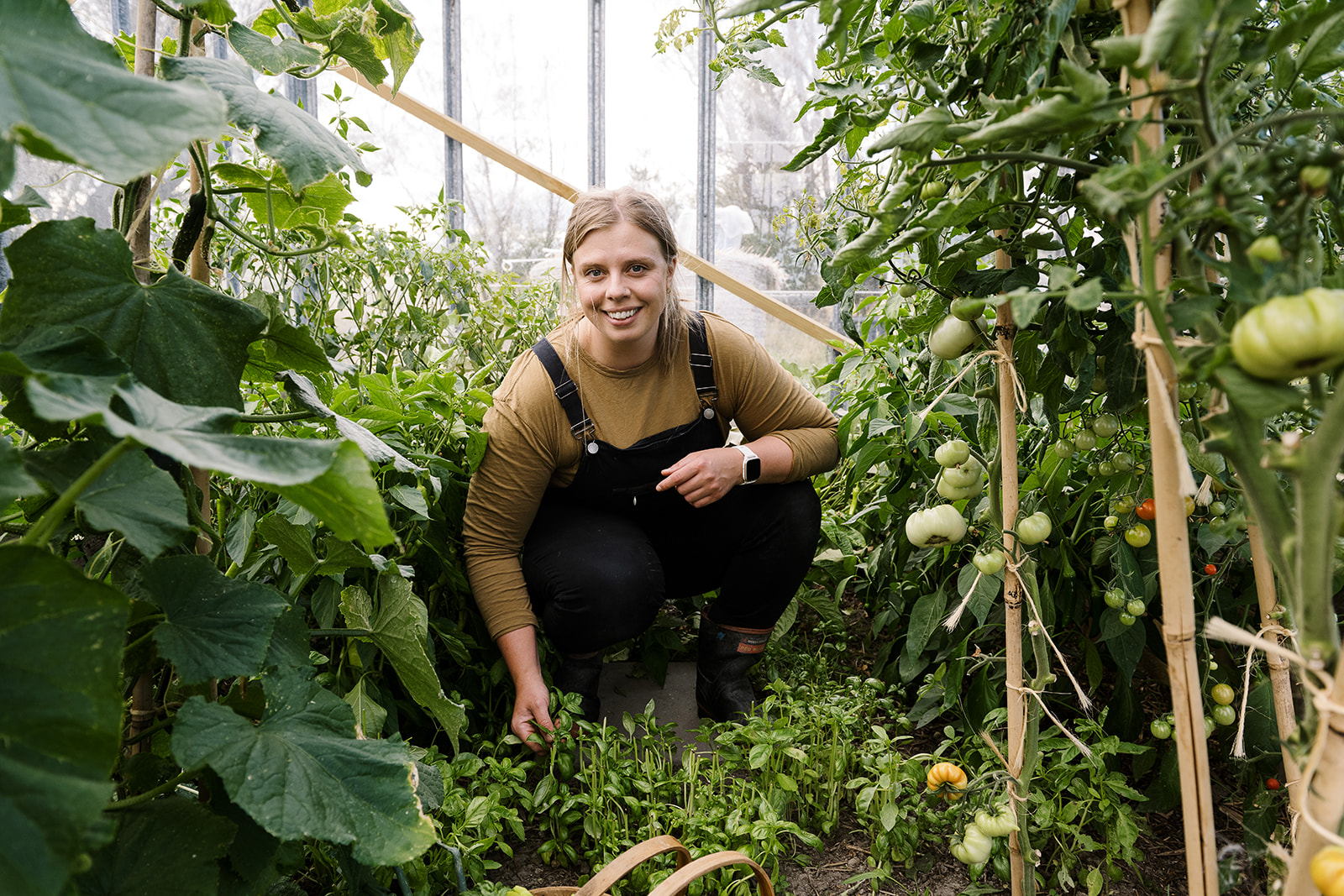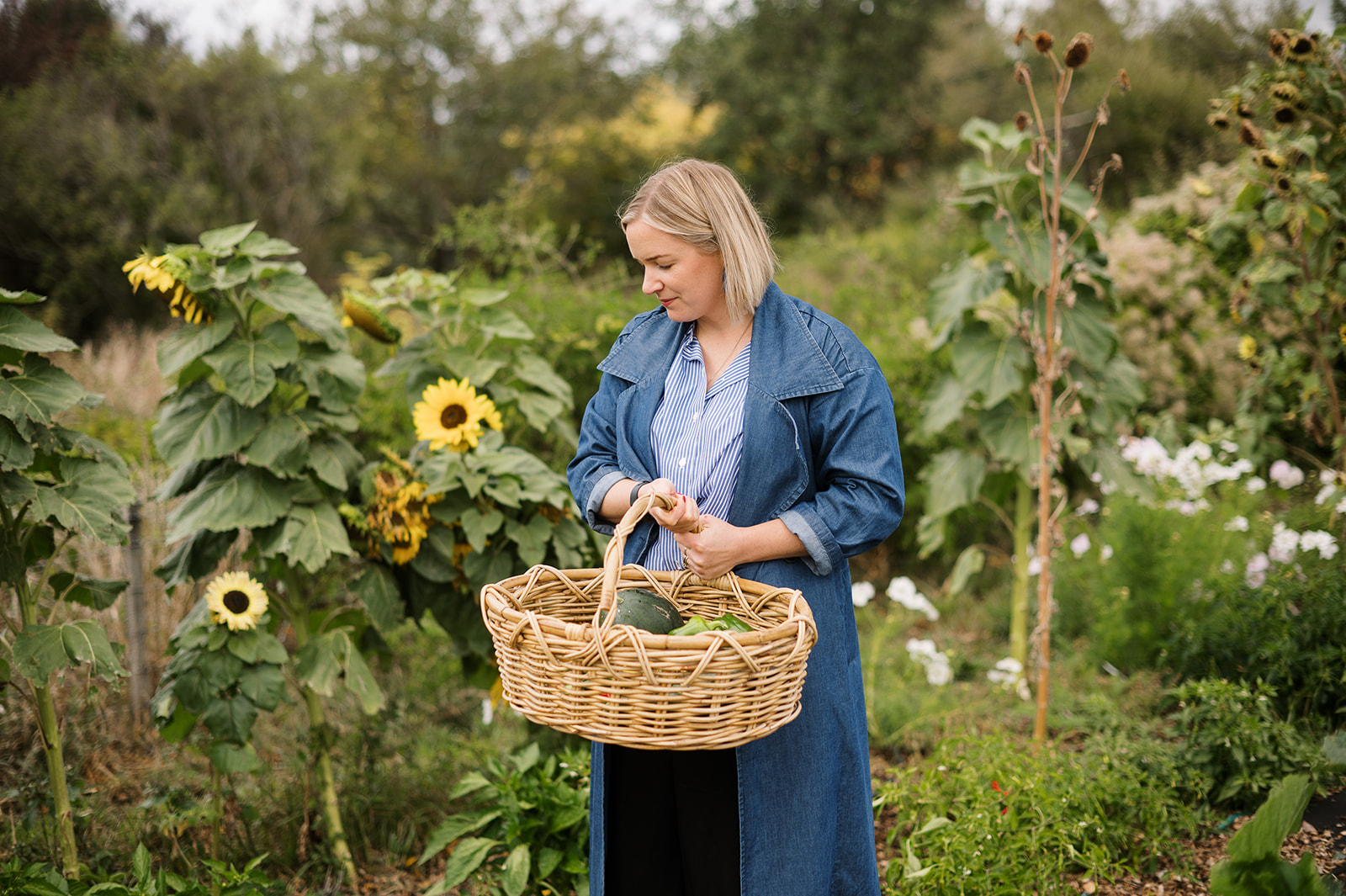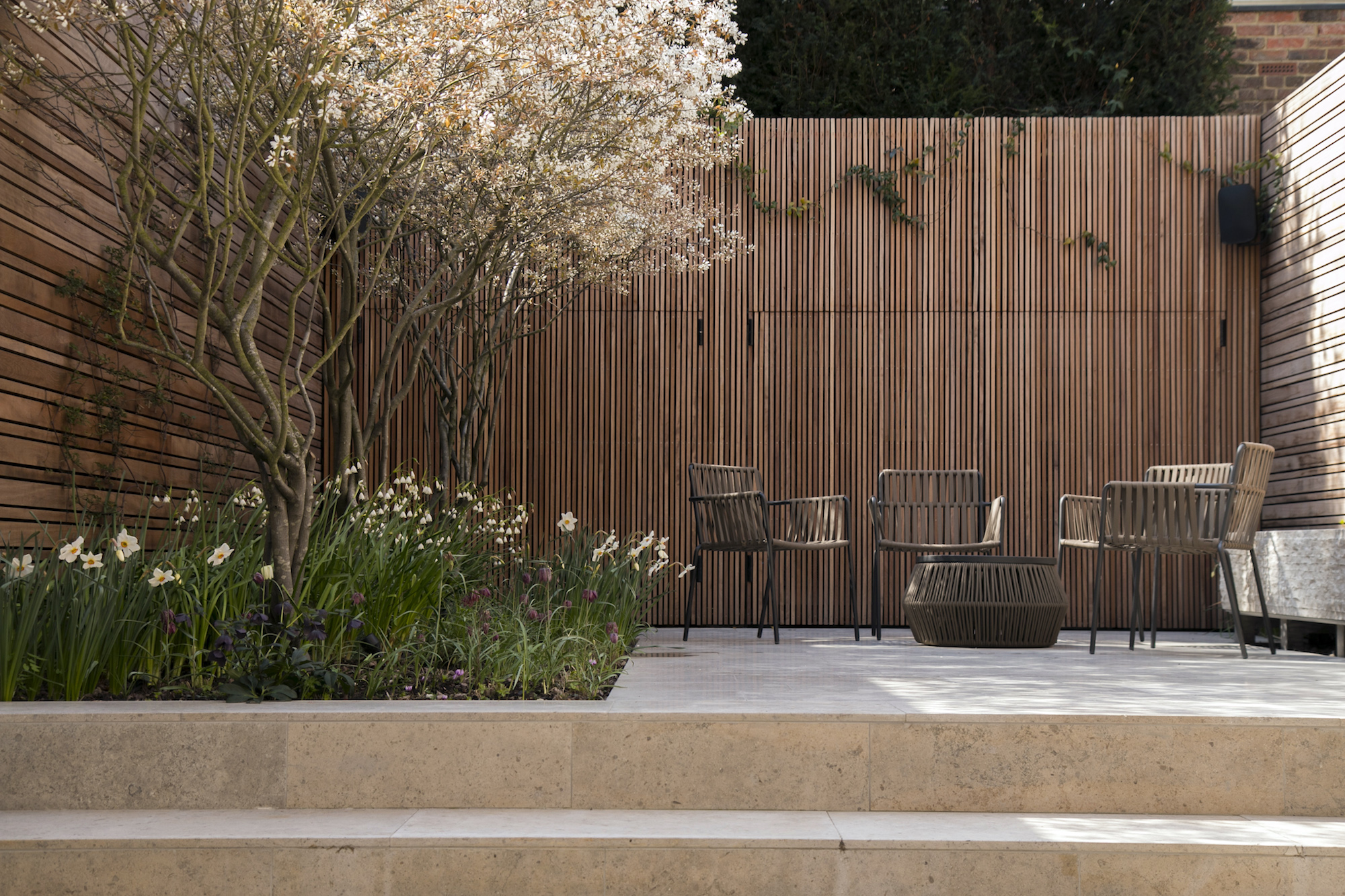A story brought to you in partnership with Goodnature.
In the quaint settlement of Lauder, Central Otago, Gillian Swinton and her partner Hamish have cultivated a lifestyle that seamlessly blends their love for gardening, hospitality and rural living.
Originally from Scotland, Gillian embarked on a journey of exploration after completing her university education, seeking a change from the familiarity of her Edinburgh roots. Opting to start her adventure from the farthest point from home, she landed in New Zealand. But she “got stuck” here in Aotearoa, or, rather, the country captured her heart.

Gillian Swinton in her Central Otago garden.
Fourteen years later, she finds herself firmly rooted in Aotearoa, alongside her Southland-bred partner Hamish, whom she met while working at a ski field on Coronet Peak. After stints in Australia and Canada, and working as a ‘station cook,’ the couple returned to New Zealand with a shared vision of finding their own patch of paradise.
Settling briefly on Hamish’s family farm in Southland, they finally stumbled upon their dream property in Lauder — a small town boasting a population of just 25. Here, they have established a life of ‘homesteading’ and running a Bed & Breakfast, offering a warm retreat for travellers on the Otago Central Rail Trail.
The heart of their property lies within their flourishing garden. Hamish, with his green thumb, spearheads the gardening efforts, while Gillian lends her expertise in preserving the bountiful harvests.


Their garden, once a neglected patch of land, has transformed into a thriving edible oasis. What was once a barren pig pen has been reincarnated into a large vegetable garden, as well as a paddock that’s been converted into a 200 square metre vegetable haven. From garlic — Hamish’s favourite — to Gillian’s cherished new potatoes, every corner of their garden has a purpose in their self-sustainability journey.
In Central Otago the growing season is a very narrow window, which urges Gillian and Hamish to seize every opportunity to cultivate whenever they can. This necessity fuels Gillian’s dedication to preserving their harvests, a task that led her into the world of ‘homesteading.’
Originating as an American phenomenon, homesteading is a lifestyle of self-sufficiency — a notion that resonates with Gillian and Hamish. As it makes its way into New Zealand, the concept is adapted to the geographical challenges and resources available. “Homesteading is essentially about saving money and making the most of what you’ve got.” Gillian says.





Gardening in Central Otago comes with its own set of challenges. The region’s short growing season demands careful planning and resourcefulness. Gillian and Hamish have learned to navigate the harsh realities of frosts and winds that unrelentingly sweep through their plot of land.
Frost, a vegetable garden’s nemesis, poses a constant threat to their delicate crops, requiring vigilant protection. Gillian even recalls this New Year’s Eve, coming home from a party to fight frosts in their garden!
Wind, too, tests their patience, uprooting seedlings and wreaking havoc in their garden beds. As well as a myriad of pests that love the easy access to fodder on their property. Despite the challenges, Gillian and Hamish embrace the resilience of gardening and take each setback as an opportunity for growth. “Gardening is always forgiving. It comes with lots of failures, but it helps us try different things.” Gillian says about being open-minded with gardening.


For Gillian, ‘homesteading’ resonates with her innate resourcefulness and adaptability. It also complements the hospitality aspect of their property, where each morning, the kitchen is prepared for Bed & Breakfast guests. From homemade preserves, jams and yoghurt to fresh eggs and honey sourced from their land, guests are treated to a taste of Gillian and Hamish’s self-sufficient lifestyle. On chilly mornings, especially when guests are heading out on a day of cycling the Rail Trail, Gillian’s warm batches of porridge nourish her guests, paying homage to her Scottish heritage.
Three years have passed since Gillian and Hamish started their rural-living journey in Lauder, with a commitment to self-sufficient living. Their gardens have expanded, with fresh produce year-round, complemented by the presence of chickens and beehives.
Their little ‘Farm Shop’ on the roadside of their property provides their neighbours and guests with homegrown delights. What isn’t eaten immediately finds its way into the pantry, with rows of preserved jars lining the shelves for the months ahead. From bare earth to fields of food, Gillian walks the talk when it comes to self-sufficient living. Gumboots and all.


Gillian’s seasonal garden changes & challenges:
Autumn —
In Gillian’s garden, each season presents its own set of challenges, and this summer was no exception. Describing it as more of an ‘experimental’ year, they encountered setbacks that taught them valuable lessons. The newly established ‘paddock garden’ revealed its preference for hardy, frost-tolerant plants, while the garden closer to the house is suitable for more delicate vegetables. They’re learning that they need to be smart about where things grow and how to look after them.
Navigating the short growing season in Central Otago demands a focus on maximising productivity and preserving the harvest for the leaner months ahead. Despite their best efforts, frosts are a “huge challenge”. This growing season, December was the only month they didn’t have a frost – on New Year’s Eve Gillian and Hamish came home from a New Year’s Eve party and started fighting frosts in the garden!
Their location is also very wind-prone. With seedlings sometimes getting ripped right out of the ground. On the flipside, the good airflow is a great benefit for growing garlic! In their spot, they really are up against the elements.


And, perhaps the most persistent challenge comes in the form of pests. Gillian describes her part of the world as “pest country”. Though really not a fan, she acknowledges the presence of pests like ferrets, rats and possums as a normal aspect of rural life. She and Hamish adopt a wide range of proactive measures to safeguard her homestead and ensure the integrity of her harvest.
Gillian described their chicken coop as like “Fort Knox” while they were trying to outsmart a ferret that had slaughtered five of their chickens. She knows they have rats around, and recently couldn’t believe her eyes when she watched mice crawling up the sunflowers to eat the seeds. She openly shares about pests on their land on her social media, encouraging people to be part of managing pests and know that it’s normal.
Gillian and Hamish are using Goodnature’s Smart Traps alongside more traditional Live Capture Traps and DOC250 and 200 traps for ferrets, stoats, rats and hedgehogs, and a Goodnature Professional Trap Kit for trapping rats and mice in and around their home.
–
“We love how rural homesteaders are embracing trapping, not just to protect their own harvest, but also to care for mother nature. The more you live off the land, the deeper your connection to nature becomes, so I’m not surprised that Gillian and Hamish have got a full suite of pest traps out on their land, including a few of ours. Rural trapping is SUCH a win-win – every ferret, stoat, rat and hedgehog taken out of their garden keeps their chooks and harvest safe, but it’s also a massive boost for all the incredible native insects, lizards and birds that call their homestead home.”
– Craig Bond, Goodnature Co-founder






This article was brought to you by Goodnature.
A little about Goodnature, and why we support their kaupapa
Born out in the New Zealand bush, Goodnature’s revolutionary traps are toxin-free, built to last, a pleasure to use and respectful to the pests they kill. They’re big believers that less pests equals more nature, and with almost half a million Goodnature traps in homes, backyards, forests and farms around the world, that belief is becoming reality one pest at a time.
Words by Emma Sage | Photography by Natalie McNally





